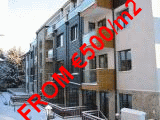There are almost 140 km of ski runs, 25 000 beds and 1 billion leva of investment. This is how sound the plans of the Samokov mayor Angel Nikolov for the years to come.The plans include the project for Borovets expansion, but also building a new resort and connecting them both with lifts and roads. In a few years Samokov will have a Business Park on 600 000 m2 in the northern part of the city and also a modern residential complex on 240 000 m2 in the southern part. Travel time from the capital will obstacles. The initiators don’t lack optimism and the foreign investors’ interest in winter properties is the main reason. Super Borovets will have…
On the meeting of the shareholders of Rila – Samokov 2004 in the beginning of the week, the project just may have the chance to be realized.
Problems started after assassination of banker Emil Kulev, who held a stock of 51% (Samokov Munisipality had 25%, Glavbolgarstroy had 16%, Energocomplect – 8%). After the protests of mayor Nikolov that 2 000 000 m2 municipal land might be sold, statutes were changed and now decisions will be taken after the approval of 4/5 of the votes.
New executive director Plamen Gochev (representative of the Kulev inheritors) pointed out that work on the project has not stopped despite the different opinions. He says that negotiations with potential deliverers of lifts have taken place and soon one will be chosen. Plans are now ready for a cabin lift from the southern part of the town to the high mountain parts.
Until the end of July the business plan of the company must be ready, as well as the detailed construction plans for two of the tourist spots must be approved – Beli Iskar and Banderata (a total of 9 000 beds). The exact amount of investment will be clear then, but Gochev and Nikolov are certain that investment for the first stage is acquired, without pointing out the source. The lift construction will start in August.
For the past two years Borosport, which manages Borovets infrastructure in the moment, has invested 30 million leva in renovating the lifts and the ski runs. The investment schedule forsees that another 60 million leva will be invested in the next three years again for renovation. Borovets has a chance of avoiding the overbuilding and to turn into the best mountain resort and I approve any kind of investment, even in Iskrovete, if they are wise and there is a balance between number of beds and the services”, says Neli Sandalska, executive director of Balkantourist, owner of Borosport.
For now the resort has 5 500 beds and the project plans are for a total of 18 000. Existing ski runs are 50 km and 60 more must be built, also the lifts are 11 and must become 23. Preliminary calculations say that an investment of 150 000 000 leva are needed for building the resort infrastructure. The prognosis of Samokov mayor are even bolder – between 600 and 900 million leva in the next few years.
Three settlements for the mega resort
Despite the difficult start and the investment source still not clear enough of the Rila – Samokov 2004 Project, Samokov Municipality has now another project. Right now the procedure of registering of Nadar Company with equal shareholders – the Municipality and LM Impecs is on its way. This company’s purpose is “preparing of a general construction plan, ecological rating and applying for concession for building ski runs and facilities and then constructing a new resort in the Iskrove area – Samokov villages Mala Cyrkva, Madjare and Govedartsi. Kovachki’s representative Victor Sokachev pointed that on this stage it is too early for comments about the project. “We have nothing in common with Super Borovets project”, said Victor Sokachev.
Mayor Nikolov says that the new resort may have 7 000 beds and another 35 km of ski runs. The rough amount of investment needed (around 10 – 15 000 for one bed) is 100 000 000 leva. For now the municipality doesn’t say a word on which plot of land will be used. Most locals approve the project and expect it to bring back to life their region, because rural tourism there has just started, but is still the cheapest segment of tourism market.
Source: Capital News




